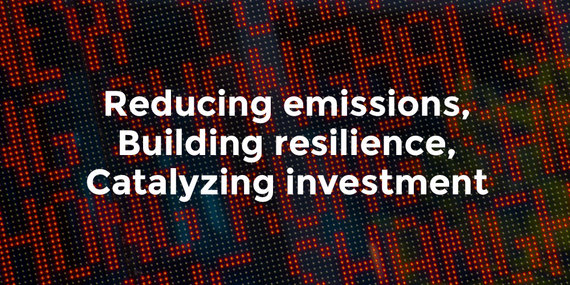U.S. President Barack Obama and Chinese President Xi Jinping announced today that the United States and China are formally joining the Paris Agreement on climate change. This caps a remarkable two years of bilateral cooperation on climate change following their joint announcement in 2014, when they revealed their respective greenhouse gas emissions reductions targets, and their joint announcement in 2015, when they agreed on key provisions for what would become the groundbreaking Paris Agreement on global climate change.
As the world's two largest economies and two largest emitters, one an industrialized economy and the other an emerging economy, this announcement sends an unprecedented signal to the business community, that the agreement reached in Paris is now set to be grounded in domestic law and that climate policy will become a common factor for companies as they assess regulatory risk and opportunity.
The joint announcement continues the unprecedented cooperation between the United States and China on climate change. That these economic powerhouses have become co-champions of a global agreement is itself striking; that climate, energy, and environment is now a cornerstone of their bilateral cooperation is even more so. Climate is prominent in the outcomes of the U.S.-China Strategic and Economic Dialogue, and their bilateral Climate Change Working Group fosters collaboration in every emitting sector, from supporting low-carbon power generation and clean transport fuels and freight, to promoting energy efficiency in buildings, to reducing deforestation.
With other countries planning similar announcements in the coming weeks, the Paris Agreement is on course to pass the threshold required to come into effect and be legally binding, which is 55 countries representing 55 percent of global emissions. Moreover, the public policy commitment to climate action now transcends diplomatic agreements among nation states. Almost 40 countries and more than 20 cities, states, and provinces already use carbon pricing mechanisms or are planning to implement them to improve the economics of climate action. And last week, California, which is the seventh largest economy in the world, voted to extend its commitment to climate action by setting a target of reducing greenhouse gas emissions by 40 percent below 1990 levels by 2030.
This volume of government commitment to climate action is defining for the global economy. By binding themselves to the provisions of the Paris Agreement and to their own Paris targets, the United States and China will incentivize trillions of dollars in low-carbon investment through domestic legislation and regulation. All countries joining the agreement must update their targets and communicate new national climate plans every five years. When the United States and China do so in 2020, they will again unleash investment to reduce emissions and build resilience.
The US-China announcement will have an immediate impact on businesses and investors. It gives strength to domestic efforts to reduce emissions, whether through China's 13th Five-Year Plan or a series of executive actions in the United States. Businesses selling to American markets or with supply chains running through China will face the impact. And it is a shot in the arm for those businesses and investors managing climate risks and building resilience to climate impacts.
Together this means the nature of corporate climate leadership in a post-Paris world has changed.
Corporate leadership now requires reducing emissions, building resilience, and catalyzing investment in line with the agreement's long-term goals. Companies that want to get ahead of climate regulation will choose to set science-based emissions reduction targets that follow the Paris trajectory. And true climate leadership will require multinational collaboration to reduce emissions and build resilience in supply chains spanning the globe.
This post has been written by BSR's Edward Cameron, David Wei and Samantha Harris.
--
